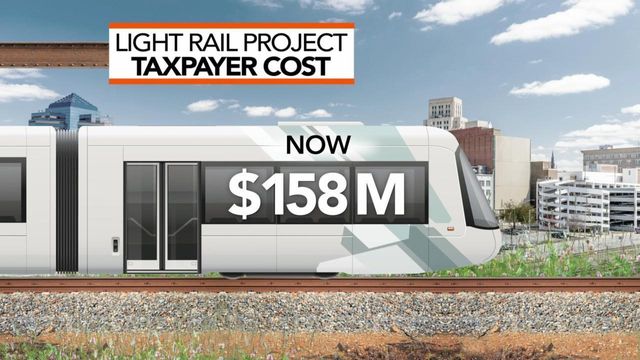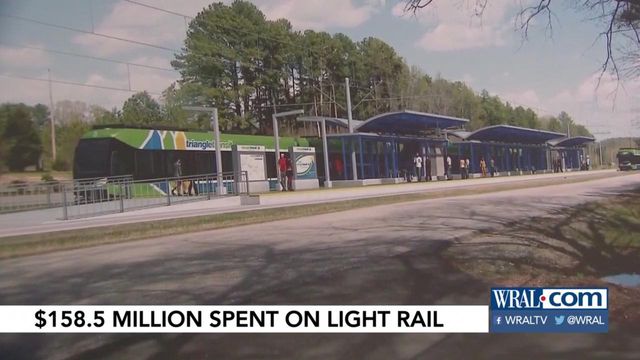Estimated cost for failed Durham-Orange light rail line nears $159M
Although it was abandoned earlier this year, months before construction was even scheduled to begin, the now defunct Durham-Orange Light Rail project is expected to cost North Carolina taxpayers more than $158 million before it's officially closed out in 2020.
GoTriangle's Board of Trustees stopped work on the project at the end of March after the transit organization failed to secure land donations, private funding and cooperative agreements from key partners, including Duke University, ahead of a legislative deadline.
As of March 31, GoTriangle had already paid out about $130 million on planning, engineering design and other costs since 2014. But in an April 29 memo to county leaders in Durham and Orange counties, obtained via records request by WRAL News, transit officials said the costs are expected to top $153 million through the end of June, with an additional $5 million estimated during the 2020 fiscal year.
The majority of that updated figure – about $20 million – will pay for previously unbilled work performed in the early part of 2019, just before the project folded.
The remainder will largely pay for staff, consultants and real estate expenses as the project winds down.
John Tallmadge, the interim director of the Durham-Orange Light Rail project, said the spending was reasonable given the phase of the project. Without it, he said, there was no way to secure a $1.2 billion federal grant that would have funded nearly half the light rail line.
"We were very close to construction, and on a $2.5 billion project, you've got to spend this kind of money in order to get to where we were in the process," Tallmadge said.
Some of the money spent upfront could have been reimbursed through the federal grant transit officials hoped to have in place by November, Tallmadge added, but the end of the project means that's no longer an option.
"That’s unfortunately the way it works, and that’s why it was a big loss to our community," Wendy Jacobs, chair of the Durham County Board of Commissioners, said.
GoTriangle expects to be largely done paying consultants for the project by the end of June 2019, a cost that totals about $1.3 million for general engineering, project and construction management .
But legal expenses and compensation related to real estate acquisitions are expected to stretch into the 2020 fiscal year. That includes costs associated with five active lawsuits the transit organization is still fighting in court.
"These additional amounts of land-owner compensation and litigation expenses are not known at this time and cannot be predicted with certainty," the GoTriangle memo says.
But the largest remaining costs noted in the memo are tied to the staff once dedicated to the light rail project. Through June 2020, GoTriangle estimates the department will pay out more than $2.5 million as they consider how to restructure.
Some of those staff members, Tallmadge said, will be shifted to work on other transit projects in the area, all of which will be funded by a half-cent sales tax approved by voters.
"We wanted to be thoughtful about what staffing would be needed for work that would be going forward in the future for Durham and Orange counties, or that is ramping up on the Wake County side," Tallmadge said.
Costs also include rent in GoTriangle's Durham office, located on the 10th floor of the N.C. Mutual Life building downtown – an additional $475,000 through June 2020. The GoTriangle Board of Trustees must decide whether to break its five-year lease in the space early, potentially incurring additional costs.
As for what the taxpayers will ultimately gain for nearly $160 million in spending on the project, Tallmadge said "it's a difficult question." The light rail project, he said, was backed both by voters and elected officials, who determined it was critical infrastructure for the area.
He said the resources spent planning, designing and preparing to move forward on the project gave it the best chance to succeed.
"Unfortunately," Tallmadge said, "we ended up where we are, and there was no other way to get to this point in time to potentially succeed without spending that money."
Jacobs called the loss of the public investment in the light rail project "upsetting." But looking ahead, she said local leaders are working on a new Durham County transit plan formed by "a very collaborative, community-based process."
"It’s going to be a very different approach," Jacobs said. "We’re going to make sure we get a lot of input from the community about exactly what that looks like."












